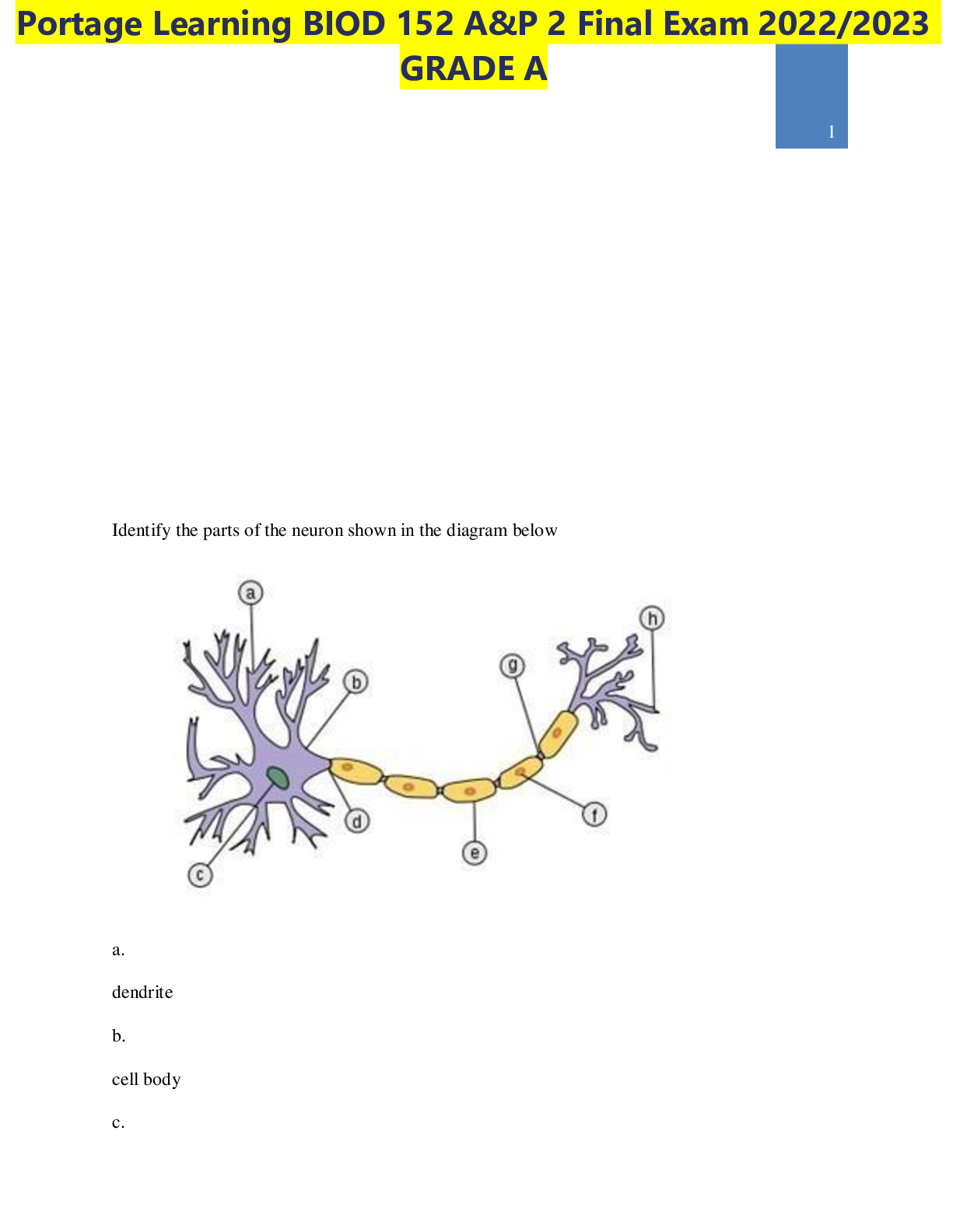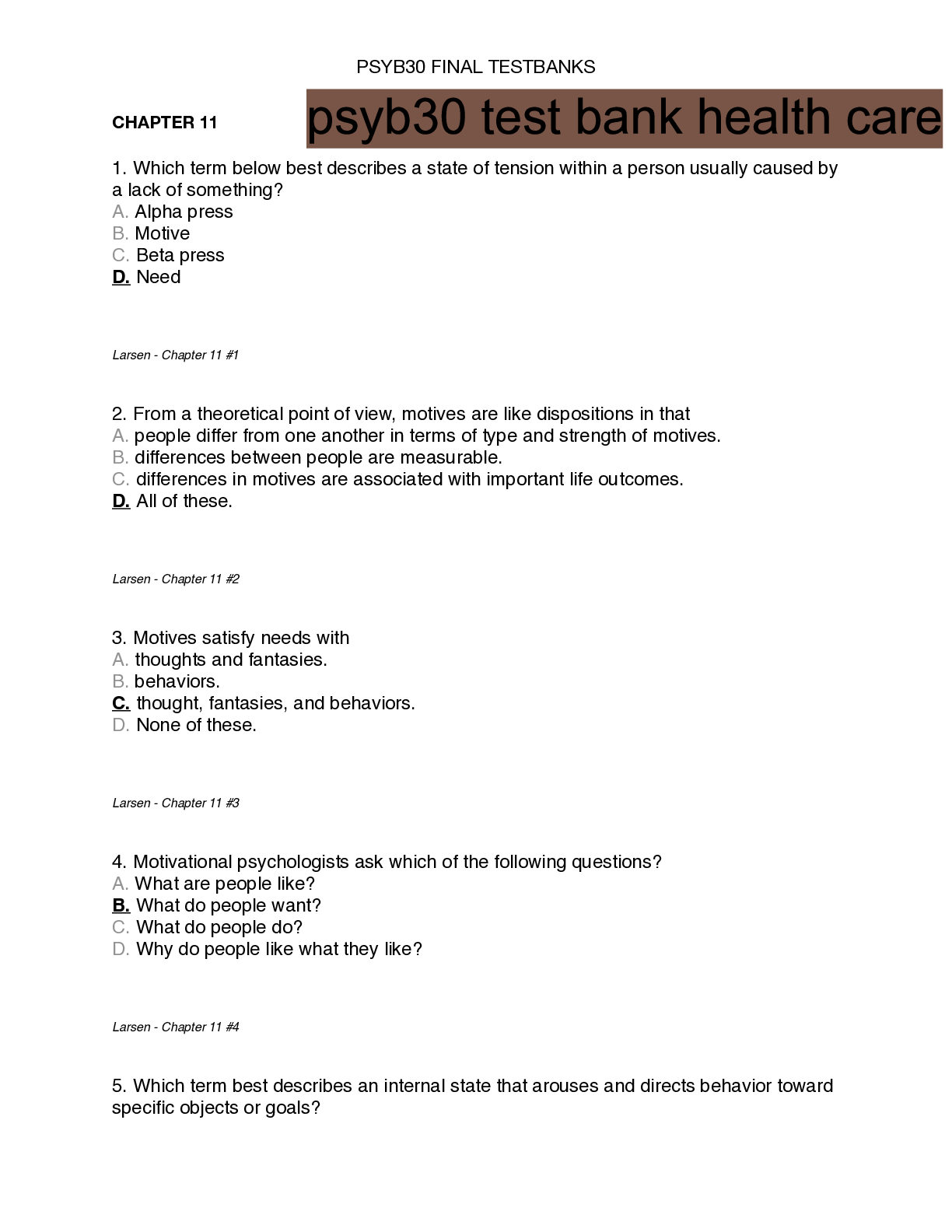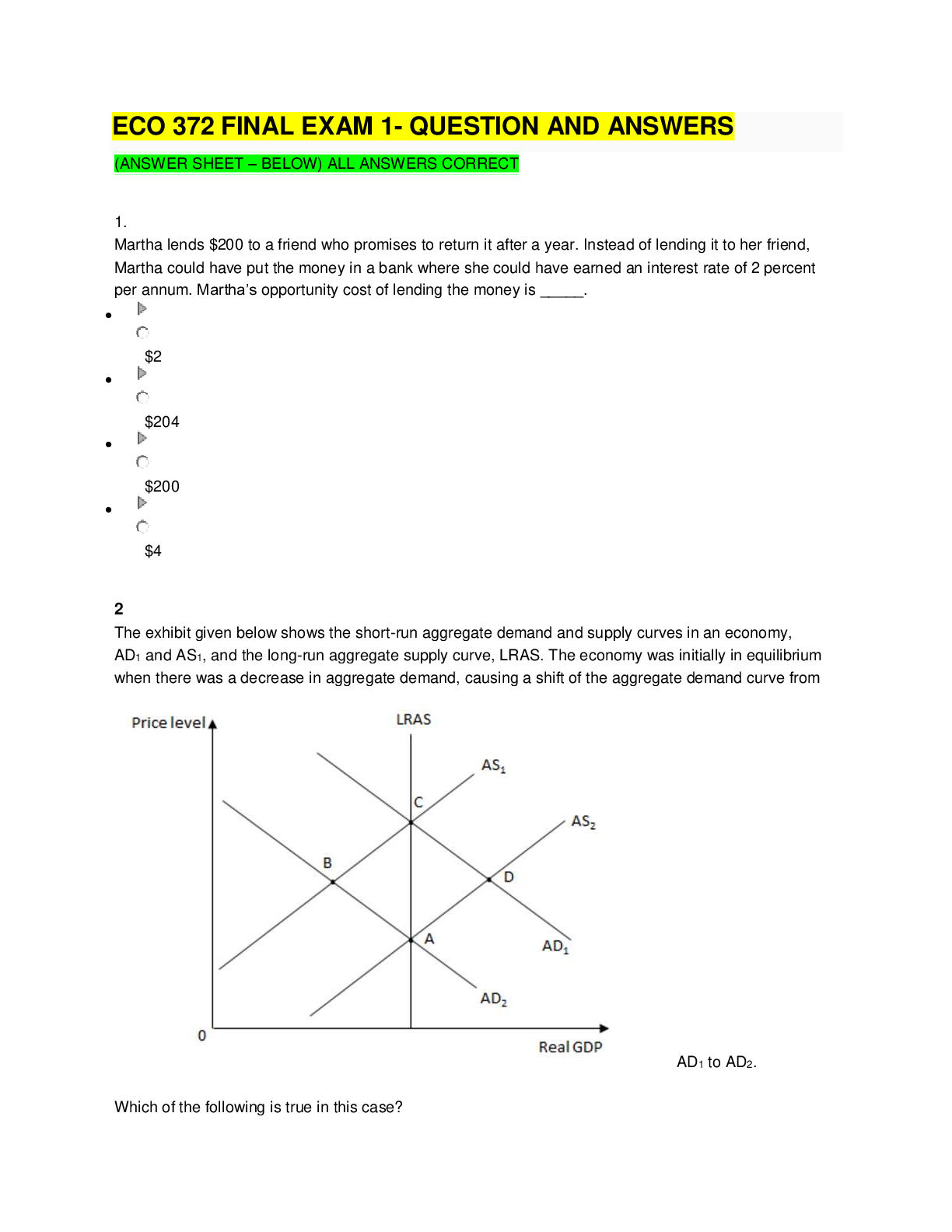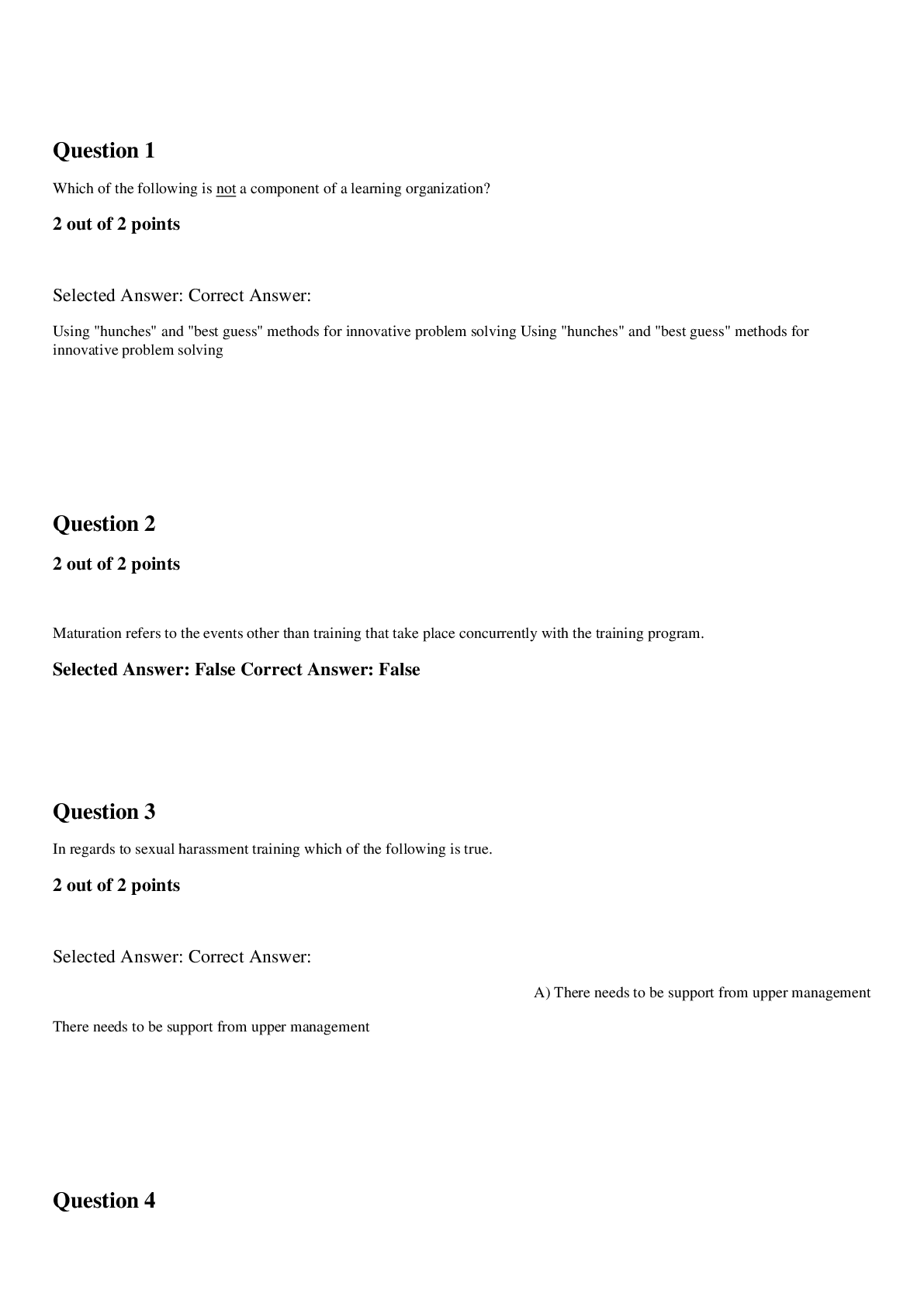*NURSING > QUESTIONS & ANSWERS > Portage Learning BIOD 152 A&P 2 Final Exam 2022/2023 GRADE A (All)
Portage Learning BIOD 152 A&P 2 Final Exam 2022/2023 GRADE A
Document Content and Description Below
Identify the parts of the neuron shown in the diagram below a. dendrite b. cell body c. Portage Learning / BIOD 152 A & P 2 study guide for final exam. 2 nucleus List the four parts of the hu... man brain The human brain is made up of the cerebral hemispheres, diencephalon, brain stem, and cerebellum. List and describe the 3 meninges of the human brain. The leathery dura mater is the double-layered outer meninx. The middle arachnoid meninx is a loose layer separated from the dura mater by the subdural space. Portage Learning / BIOD 152 A & P 2 study guide for final exam. The inner pia mater meninx is composed of connective tissue and is tightly attached to the brain 3 . Answer the following three questions: What blood cell contains hemoglobin? Red blood cells The P wave represents what? Atrial depolarization (systole) Define Systole. the heart is contracting and ejecting blood into circulation List 3 functions of the female reproductive system. Portage Learning / BIOD 152 A & P 2 study guide for final exam. 4 The female reproductive system has the following functions: eggs and estrogen production as well as serving as the site for the development of a baby after fertilization of an egg occurs. Name the three types of ligaments associated with the ovaries and the function of each. The ovaries are held in place by the suspensory, ovarian, and broad ligaments. The suspensory ligaments attach the ovaries to the pelvis wall. The ovarian ligaments attach the ovaries to the uterus. The broad ligaments hold the ovaries in place in the pelvis. Tell whether each of the following describes mitosis or meiosis: Occurs only to produce new offspring meiosis Two division cycles meiosis No crossing-over occurs mitosis Four daughter cells are produced meiosis Produces cells which are not genetically identical to the parent meiosis Each tRNA anticodon codes for one type of : Portage Learning / BIOD 152 A & P 2 study guide for final exam. 5 C a. protein b. ribosome c. amino acid d. enzyme Does transcription or translation occur primarily at the ribosome? Translation Which requires RNA polymerase, transcription or translation? Transcription Are amino acids bonded together during translation or transcription? Translation If a codon reads: GAC, what is the correct anticodon? CUG Describe the shape, size and weight of a human adult kidney. The adult kidney is bean shaped, about the size of a can of soup and weighs about 5 ounces. Describe the structure and function of the renal pelvis. The renal pelvis is the centermost section of the kidney and is a funnel-shaped tube that connects to the ureter. Extensions of the pelvis called calyces collect urine which drains into the renal pelvis and then into the ureter. You are treating a patient in the hospital who was admitted with signs of orthostatic hypotension Portage Learning / BIOD 152 A & P 2 study guide for final exam. 6 (decreased blood pressure, increased heart rate, lightheaded) secondary to having severe diarrhea Portage Learning / BIOD 152 A & P 2 study guide for final exam. 7 and dehydration. Which of the following would you expect to be their GFR (glomerular filtration rate) given their symptoms? Explain your answer. a. 85 ml/min. b. 120 ml/min. c. 142 ml/min a. 85 ml/min. Dehydration decreases glomerular filtration rate. Explain, in detail, how the cardiovascular baroceptors work to maintain blood pressure. The cardiovascular baroceptors monitor and regulate blood volume (which is influenced directly by Na+ ion concentration) to maintain blood pressure. If blood volume (and consequently blood pressure) rises, the baroceptors signal the kidney causing a dramatic increase in the filtration rate, increasing the output of water and Na+ which reduces blood volume to quickly normalize the pressure. Explain, in detail, how the kidneys act to regulate pH by the excretion or reabsorption of bicarbonate. The major kidney acid-base regulating process is by way of excreting or reabsorbing bicarbonate ion. Examination of the equilibrium equation sequence below will demonstrate that loss of a bicarbonate (HCO3-) ion from the body amounts to the gain of H+ since the reactions will shift to the right. Conversely, gain of a bicarbonate (HCO3-) ion amounts to the loss of H+ since the reactions will shift to the right. Thus, renal excretion of bicarbonate results in retention of H+, while reabsorbing bicarbonate will result in excretion of H+. Which nervous system contains the sympathetic and parasympathetic divisions? D a. Central nervous system b. Peripheral nervous system c. Somatic nervous system d. Autonomic nervous system e. Sympathetic nervous system f. Parasympathetic nervous system If you were hiking in the woods and came across a mountain lion, which division of your nervous system would have increased activity? Explain your answer. [Show More]
Last updated: 2 years ago
Preview 1 out of 39 pages

Buy this document to get the full access instantly
Instant Download Access after purchase
Buy NowInstant download
We Accept:

Reviews( 1 )

by dmarie2008 · 2 years ago
$8.50
Can't find what you want? Try our AI powered Search
Document information
Connected school, study & course
About the document
Uploaded On
May 18, 2023
Number of pages
39
Written in
Additional information
This document has been written for:
Uploaded
May 18, 2023
Downloads
1
Views
191
























, 100% Correct, Download to Score A.png)

